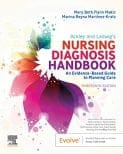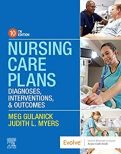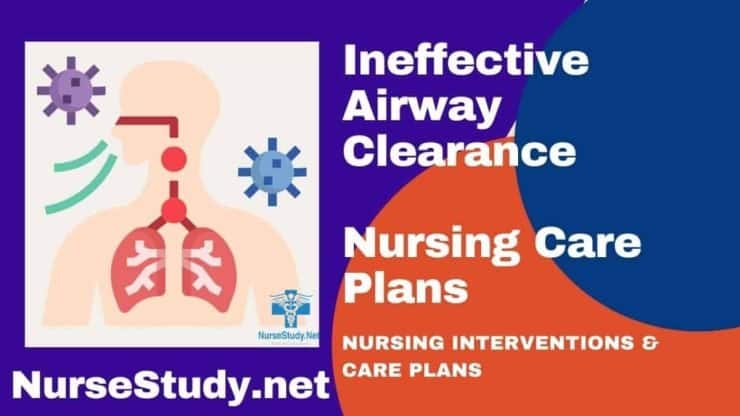Ineffective airway clearance occurs when the body loses the ability to maintain a patent airway. A compromised airway can lead to a series of serious problems, including death. Immediate attention and intervention are necessary to address airway problems.
Causes of Ineffective Airway Clearance
- Respiratory Infections: Pneumonia, bronchitis, or the flu can lead to excess mucus production and inflammation, making it difficult to clear the airways effectively.
- Chronic Obstructive Pulmonary Disease (COPD): COPD causes airways to become narrowed and obstructed, impairing the ability to clear mucus and other secretions.
- Asthma is characterized by inflammation and narrowing of the airways.
- Chronic Bronchitis involves persistent inflammation and excessive mucus production in the bronchial tubes, leading to impaired airway clearance.
- Cystic fibrosis is a genetic disorder that affects the production of mucus, causing it to become thick and sticky.
- Neuromuscular Disorders: Certain neurological conditions such as muscular dystrophy, amyotrophic lateral sclerosis (ALS), or spinal cord injuries can weaken the respiratory muscles responsible for coughing and clearing the airways.
- Bedridden or Immobilized Patients: Those who are bedridden or have limited mobility may experience decreased muscle tone, reducing their ability to clear the airways effectively.
- Smoking: Tobacco smoke irritates the airways and damages the cilia, the tiny hair-like structures that help move mucus out of the lungs.
- Sedation or Anesthesia: Medications used for sedation or general anesthesia can temporarily relax the muscles responsible for coughing and impair airway clearance.
- Structural Abnormalities: Structural abnormalities in the airways, such as a deviated septum or nasal polyps, can obstruct airflow and hinder adequate clearance.
Signs and Symptoms of Ineffective Airway Clearance
- Abnormal breath sounds (e.g., crackles, wheezes, rhonchi)
- Abnormal respiration (rate, rhythm, and depth)
- Dyspnea or difficulty breathing
- Excessive secretions
- Hypoxia / cyanosis
- Ineffective or absent cough
- Orthopnea
Expected Outcomes and Goals for Ineffective Airway Clearance
- Improved Airway Patency: The primary goal is establishing and maintaining a clear airway. This can be achieved through interventions such as suctioning, positioning, and administering bronchodilators or mucolytic medications. The expected outcome is the removal of secretions and the promotion of unobstructed airflow.
- Effective Coughing: The goal is to enhance the patient’s ability to cough and expectorate effectively. Nursing interventions may include providing adequate hydration, administering nebulized saline, or teaching the patient proper coughing and deep breathing techniques. The expected outcome is the ability to cough productively, clearing the airways of mucus and debris.
- Optimal Oxygenation: The goal is to maintain adequate oxygen levels in the blood. This can be achieved by ensuring proper oxygen administration, monitoring oxygen saturation levels, and addressing underlying respiratory conditions. The expected outcome is improved oxygenation, as evidenced by stable oxygen saturation levels and the absence of signs of hypoxia.
- Reduced Risk of Infection: The goal is to minimize the risk of respiratory infections, which can further compromise airway clearance. Nursing interventions may include promoting hand hygiene, administering appropriate vaccinations, and educating the patient about respiratory hygiene. The expected outcome is the prevention of respiratory infections or early identification and prompt treatment if a condition occurs.
- Patient Education and Self-Management: The goal is to empower patients with knowledge and skills to manage their airway clearance effectively. This includes teaching techniques for airway clearance, educating about medications and their proper use, and providing resources for ongoing support. The expected outcome is the patient’s ability to manage and maintain effective airway clearance independently.
Nursing Assessment and Rationales for Ineffective Airway Clearance
- Assess the patient’s respiratory rate, depth, pattern, and abnormal breath sounds such as wheezing or crackles. Rationale: This helps identify signs of respiratory distress, airway obstruction, or abnormal lung sounds that may indicate excessive mucus or secretions.
- Observe the color, consistency, and amount of sputum produced by the patient. Rationale: Different colors and consistencies of sputum can provide clues about the nature of the respiratory condition. For example, yellow or green sputum may indicate infection, while thick and tenacious sputum may suggest cystic fibrosis or chronic bronchitis.
- Assess the patient’s cough frequency, effectiveness, and any associated symptoms like chest pain or shortness of breath. Rationale: This helps determine the patient’s ability to clear their airways and identifies any factors that may impair effective coughing, such as weak respiratory muscles or excessive mucus production.
- Monitor the patient’s oxygen saturation levels using pulse oximetry and assess for signs of hypoxia, such as cyanosis or altered mental status. Rationale: Ineffective airway clearance can compromise oxygenation, leading to hypoxia. Monitoring oxygen saturation levels helps determine the adequacy of oxygen exchange and guides appropriate interventions.
- Listen to the patient’s breath sounds using a stethoscope to detect abnormal sounds, such as diminished breath sounds or wheezing. Rationale: Abnormal breath sounds can indicate airway obstruction or the presence of excessive secretions, guiding interventions for airway clearance.
- Assess the patient’s overall respiratory effort, chest expansion, and signs of accessory muscle use. Rationale: These assessments provide information about the patient’s respiratory status and the effort required for breathing, which can be affected by ineffective airway clearance.
- Obtain a detailed medical history, including any respiratory conditions, smoking history, exposure to environmental pollutants, or recent respiratory infections. Rationale: The patient’s medical history helps identify underlying conditions that may contribute to ineffective airway clearance and guides the development of an individualized care plan.
- Evaluate the patient’s nutritional status and weight changes. Rationale: Inadequate nutrition can weaken respiratory muscles, impairing cough effectiveness and airway clearance. Assessing nutritional status helps identify potential contributing factors and guides appropriate interventions.
Nursing Interventions and Rationales for Ineffective Airway Clearance
If tolerated, position the patient in an upright or semi-upright position to facilitate optimal lung expansion and improve airflow. Rationale: This position helps reduce the compression of the diaphragm, allowing for better lung ventilation and promoting airway clearance.
Perform suctioning to remove excessive secretions or mucus plugs obstructing the airways. Rationale: Suctioning helps clear the airways of accumulated secretions, improving airway patency and promoting effective breathing.
Encourage and provide adequate hydration to help thin and loosen mucus, making it easier to expectorate. Rationale: Sufficient hydration helps liquefy mucus, making it less sticky and easier to clear from the airways through coughing.
Perform chest physiotherapy techniques such as percussion, vibration, and postural drainage to mobilize and loosen secretions, facilitating their clearance. Rationale: Chest physiotherapy helps dislodge and mobilize mucus, making it easier for patients to cough and clear their airways effectively.
Teach and encourage the patient to perform deep breathing exercises, incentive spirometry, or positive expiratory pressure devices to promote lung expansion and improve airway clearance. Rationale: These exercises help strengthen respiratory muscles, improve cough effectiveness, and enhance the mobilization and clearance of secretions.
Administer bronchodilators, mucolytics, or expectorants as prescribed to relieve bronchial constriction, reduce mucus viscosity, and facilitate its removal from the airways. Rationale: These medications help improve airflow, reduce mucus thickness, and promote effective airway clearance.
Provide supplemental oxygen therapy as prescribed to maintain adequate oxygenation and optimize respiratory function. Rationale: Supplemental oxygen helps ensure sufficient oxygen supply to the tissues, improving oxygenation and reducing the workload on the respiratory system.
Educate the patient about proper coughing techniques, deep breathing exercises, and strategies to promote airway clearance. Rationale: Patient education empowers individuals to actively manage their condition, encourage adherence to prescribed treatments, and enable early recognition of worsening symptoms.
Encourage and support smoking cessation for patients who smoke. Rationale: Smoking damages the airways, impairs ciliary function, and increases mucus production, exacerbating airway obstruction. Smoking cessation reduces these risks and improves respiratory health.
More Nursing Diagnoses and Ineffective Airway Clearance Nursing Care Plans
Cerebrovascular Accident (CVA or Stroke)
Nursing Diagnosis: Ineffective airway clearance related to neuromuscular involvement secondary to CVA infarct as evidenced by the presence of abnormal breath sounds and dyspnea
Tracheostomy
Nursing Diagnosis: Ineffective airway clearance related to copious secretions secondary to tracheostomy as evidenced by tachypnea, the difficulty of breathing, and very thick mucus secretions.
Foreign Body Obstruction
Nursing Diagnosis: Ineffective airway clearance related to foreign body obstruction of the airway as evidenced by anxiety, nasal flaring, intercostal retractions, and use of accessory muscles when breathing
Chronic Obstructive Pulmonary Disease (COPD)
Ineffective Airway Clearance related to COPD as evidenced by shortness of breath, wheezing, SpO2 level of 85%, productive cough, difficulty to expectorate greenish phlegm.
Pneumonia
Ineffective Airway Clearance related to the disease process of bacterial pneumonia as evidenced by shortness of breath, wheezing, SpO2 level of 85%, productive cough, difficulty to expectorate greenish phlegm.
Pharyngitis
Ineffective Airway Clearance related to inflammation of the pharynx as evidenced by difficulty in swallowing and shortness of breath.
Nursing Test Questions for Ineffective Airway Clearance
Question 1: A patient with chronic bronchitis is experiencing ineffective airway clearance. Which intervention should the nurse prioritize to promote effective airway clearance?
a) Administer bronchodilator medication.
b) Encourage the patient to increase fluid intake.
c) Teach the patient deep breathing exercises.
d) Perform chest physiotherapy techniques.
Answer: d) Perform chest physiotherapy techniques.
Rationale: Chest physiotherapy techniques, such as percussion, vibration, and postural drainage, help mobilize and loosen secretions, facilitating their clearance from the airways. This intervention promotes effective airway clearance in patients with chronic bronchitis.
Question 2: A patient has thick, tenacious mucus that is difficult to clear. Which medication should the nurse anticipate being prescribed to help improve airway clearance?
a) Expectorant
b) Bronchodilator
c) Mucolytic
d) Corticosteroid
Answer: c) Mucolytic
Rationale: Mucolytic medications help reduce the viscosity of mucus, making it easier to clear from the airways. They are commonly used to assist in improving airway clearance when secretions are thick and tenacious.
Question 3: A patient with ineffective airway clearance is experiencing decreased oxygen saturation levels. Which nursing intervention should the nurse implement to improve oxygenation?
a) Position the patient in an upright position.
b) Administer supplemental oxygen therapy.
c) Encourage the patient to cough forcefully.
d) Administer bronchodilator medication.
Answer: b) Administer supplemental oxygen therapy.
Rationale: Supplemental oxygen therapy is indicated to improve oxygenation in patients with decreased oxygen saturation levels. It helps ensure adequate oxygen supply to the tissues and supports respiratory function.
Question 4: A patient with ineffective airway clearance is unable to effectively cough and clear secretions. Which intervention should the nurse implement to promote effective coughing?
a) Encourage the patient to drink warm fluids.
b) Administer an antitussive medication.
c) Teach the patient pursed-lip breathing.
d) Provide the patient with a splinting pillow.
Answer: c) Teach the patient pursed-lip breathing.
Rationale: Pursed-lip breathing can help improve cough effectiveness by providing back pressure, promoting a more forceful and productive cough. This technique is particularly helpful for patients who have difficulty effectively clearing secretions.
Question 5: A patient with ineffective airway clearance is bedridden. Which intervention should the nurse prioritize to enhance airway clearance?
a) Administer bronchodilator medication.
b) Encourage the patient to perform range-of-motion exercises.
c) Perform frequent oral care.
d) Position the patient in a side-lying position.
Answer: d) Position the patient in a side-lying position.
Rationale: Positioning the bedridden patient in a side-lying position promotes optimal lung expansion, facilitates drainage of secretions, and improves airway clearance. This position helps prevent pooling of secretions and supports effective breathing.
Nursing References
Ackley, B. J., Ladwig, G. B., Makic, M. B., Martinez-Kratz, M. R., & Zanotti, M. (2020). Nursing diagnoses handbook: An evidence-based guide to planning care. St. Louis, MO: Elsevier. Buy on Amazon
Gulanick, M., & Myers, J. L. (2017). Nursing care plans: Diagnoses, interventions, & outcomes. St. Louis, MO: Elsevier. Buy on Amazon
Ignatavicius, D. D., Workman, M. L., Rebar, C. R., & Heimgartner, N. M. (2018). Medical-surgical nursing: Concepts for interprofessional collaborative care. St. Louis, MO: Elsevier. Buy on Amazon
Silvestri, L. A. (2020). Saunders comprehensive review for the NCLEX-RN examination. St. Louis, MO: Elsevier. Buy on Amazon
Best Nursing Books and Resources
These are the nursing books and resources that we recommend.
NurseStudy.net is a participant in the Amazon Services LLC Associates Program. Included below are affiliate links from Amazon at no additional cost from you. We may earn a small commission from your purchase. Please see our Privacy Policy

The Nursing Diagnosis Handbook E-Book: An Evidence-Based Guide to Planning Care
This is an excellent reference for nurses and nursing students. While it is a great resource for writing nursing care plans and nursing diagnoses, it also helps guide the nurse to match the nursing diagnosis to the patient assessment and diagnosis.
This handbook has been updated with NANDA-I approved Nursing Diagnoses that incorporates NOC and NIC taxonomies and evidenced based nursing interventions and much more.

NANDA International Nursing Diagnoses: Definitions & Classification, 2021-2023
All introductory chapters in this updated version of a ground-breaking text have been completely rewritten to give nurses the knowledge they require to appreciate assessment, its relationship to diagnosis and clinical reasoning, and the goal and use of taxonomic organization at the bedside.

Nursing Care Plans: Nursing Diagnosis and Intervention
It contains more than 200 care plans that adhere to the newest evidence-based recommendations.
Additionally, it distinguishes between nursing and collaborative approaches and highlights QSEN competencies.
Disclaimer:
Please follow your facilities guidelines and policies and procedures.
The medical information on this site is provided as an information resource only and is not to be used or relied on for any diagnostic or treatment purposes.
This information is not intended to be nursing education and should not be used as a substitute for professional diagnosis and treatment.


